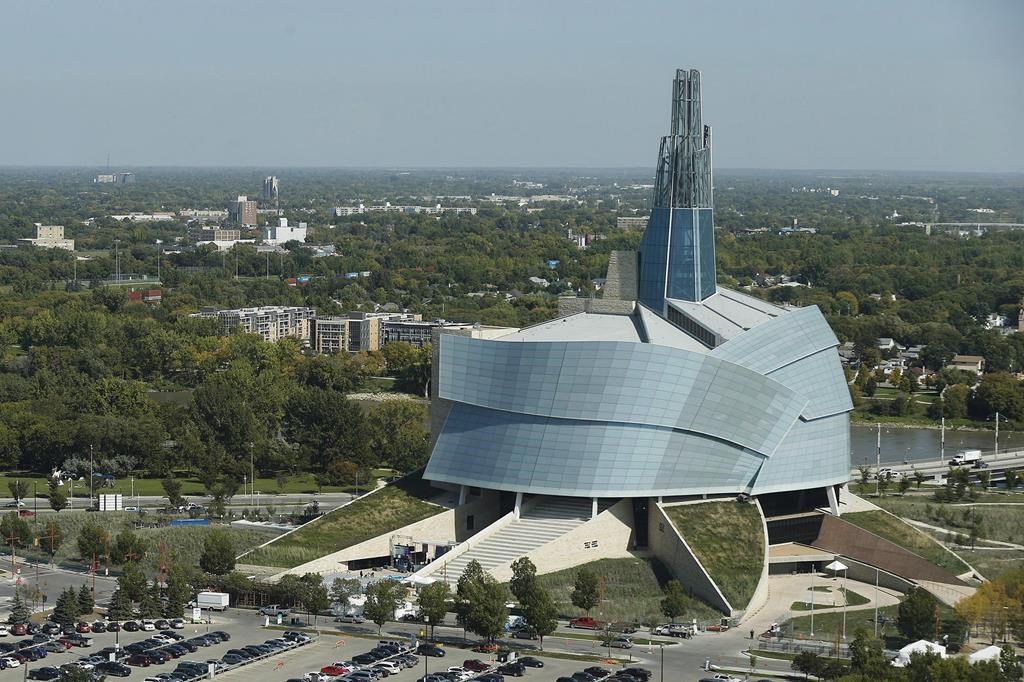Wanda Robson smiled wide as she clutched a $10 bill with a familiar face on the side — her sister, Viola Desmond, a Black woman and civil rights pioneer.

It was a momentous day in front of media inside the Canadian Museum for Human Rights in Winnipeg in 2018, as a crowd celebrated Desmond, the first woman other than the Queen on the front of a regularly circulating banknote in Canada. The museum itself is featured on the other side of the bill.
The museum and its morals have been questioned recently as numerous Black and Indigenous current and former employees shared stories of racism, discrimination and censorship.
It is the latest controversy for the embattled institution.
The museum stands tall near the meeting place of two rivers, important ancestral lands for several Indigenous communities for thousands of years.
As people make their way to the building’s second floor, they see a round theatre covered with panels inspired by visions of Indigenous youth.
The museum was criticized for its approach to Indigenous history even before construction began. Almost 600,000 artifacts were recovered during a year-long archaeological dig at the site, yet only two per cent of the fill removed was sifted.
“(It was) the worst case of legal destruction of the rich heritage that I have had the misfortune to witness,” Leigh Syms, a former archaeology curator at the nearby Manitoba Museum, said in a book, The Idea of a Human Rights Museum.
Co-author Karen Busby, a University of Manitoba law professor, said there were problems from the start, especially when it came to what would be displayed, how it would be displayed and who was making those decisions.
“The issue starts at the very top,” Busby said in a recent interview.

Get daily National news
The museum was the brainchild of Winnipeg businessman and philanthropist Israel Asper, who wanted to create a Holocaust museum. He launched a private initiative in 2003 but died soon after, so it became a legacy project taken on by his daughter.
Former prime minister Stephen Harper’s government announced in 2008 that the museum would have national status and Ottawa would pick up operating costs.

The museum’s first CEO, Stuart Murray, was a former leader of the Progressive Conservatives in Manitoba.
“He had never even been on the board of governors of a museum, didn’t know anything about human rights,” Busby said. “But he was appointed as the CEO in order to keep a political check on the museum.”
There were significant cost overruns, allegations of political interference and high staff turnover rates.
Concerns arose that stories about Canada’s historic Indigenous policies such as residential schools would be softened. Clashes began over the use of the word “genocide” in regard to Indigenous people.
When the museum finally opened in 2014, at a cost of $351 million, only five of its 11 galleries could be viewed. Exhibits about Canadian and Indigenous human rights remained closed for a few weeks.
That marked the end of Murray’s time as CEO.
He declined a request for an interview.
Debates continued
In the following years, there were more debates, including one about Myanmar leader Aung San Suu Kyi and the plight of the Rohingya people.
Critics pointed to the makeup of the museum’s decision-makers. An article published in the journal Museum Management and Curatorship last year pointed to a lack of diversity. It was co-authored by former founding team member Armando Perla, who is queer and originally from El Salvador.
“Increasing diversity in museum leadership; providing adequate anti-oppression and social justice training; openly discussing racism, implicit biases, whiteness and other forms of privilege; as well as adopting clear ethical guidelines for engaging with historically marginalized communities are a necessary starting point ….” the article said.
Perla, now with the Swedish Museum of Movements, declined to comment further.
The museum is once again looking for a leader and is reviewing its hiring and retention practices. John Young resigned as president last month following a social media campaign by the group CMHR Stop Lying.
It was formed after the museum posted images of a Justice for Black Lives rally. Current and former employees quickly responded that it was hypocritical of the museum because of racism they faced at work.
Employees also said they had to censor displays about LGBTQ2 history at the request of some school groups who visited the museum.
Pauline Rafferty, interim CEO and board chairwoman, said in an emailed statement that it has become clear the museum has serious work to do to engage with staff. Initial steps, including an external review, have already begun, she said.
“But those steps represent a starting point, not a destination, and there is much more we have to do.”










Comments